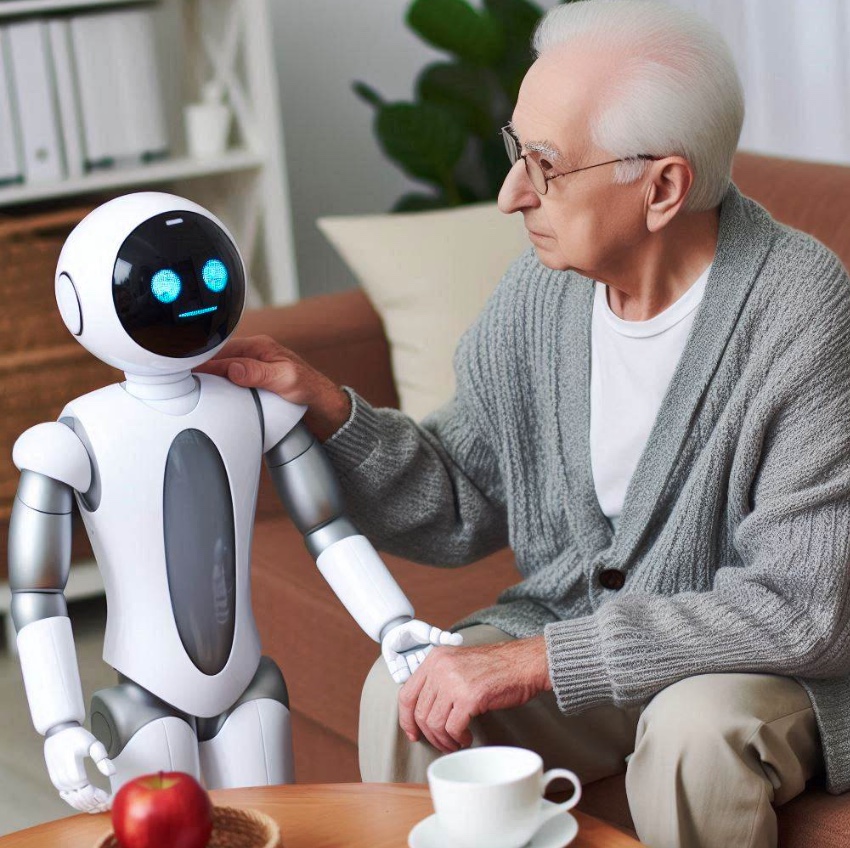In the collective imagination, robots that keep people company and help them with everyday tasks by simulating humans have always been present. Think of the late 1980s sitcom Super Vicky or the series Humans launched on Amazon Prime in 2017. In between, dozens of examples with which film, television, comics and video games have interpreted the subject ‘robot’ as a faithful human helper. The consumer technology landscape is perhaps the one that has tried to translate ideas into reality, to date, without anything valuable and concrete.
Yet, the IFA tech innovation fair in Berlin, which ended just a few days ago, showed that something is moving, thanks in part to the relentless trend of generative artificial intelligence. The protagonist is LG and its “Self Driving AI Home Hub“. Despite its overly complex name, the idea behind it is straightforward: a sort of robotic dog that looks like something out of The Jetson cartoon, with temperature and humidity sensors, a microphone, a loudspeaker, the camera for remote control and, above all, the GenAI to understand the world around it, send contextual alerts and perform entertainment functions, even for children, telling stories invented from user input or the viewing of a photo. The bad news? Self Driving AI Home Hub is not for sale but is still an exercise in style.
They will do what man does not want to do
It starts with the same principle, albeit with different features and functionality, as in Ballie, Samsung’s competitor. It is circular in shape and size but has the same plethora of sensors, speakers and cameras. The plus is the presence of a projector capable of showing information when notifications arrive, simply using the floor as a screen or a panel for watching films and video content from the web, with Ballie raising its ‘head’ and directing the projection onto the ceiling. Samsung, in a series of demonstrations at IFA, also positions the robot as a support for the older people, as it can notice when an attendant falls or is in distress and call for predefined contacts and help.

The more observant will also remember Amazon’s Astro. A device equipped with a camera, sensors and wheels, with which to move around the house autonomously. It relied on Alexa and a price that was not low but justified by the innovations on board, $1,599. Since its launch in 2021, Amazon has always relied on an invitation-only sales system, effectively relegating Astro to a narrow market niche. Gadgets of this kind are not new. For some years, Hong Kong-based Enabot has been making different versions of small spherical robots for children and pets. They are controlled like a drone via smartphone, and since the summer, the top models, which can fetch as much as EUR 999, have been upgraded to incorporate Gpt-4o. Accessories? It’s hard now to think of them as just that.
An aid for depression
These are just a few experiments, but such projects have developed in Europe mainly because of the pandemic, which made physical contact between people possible. In Japan, for example, which has the oldest population in the world, robots have long been used in care.
Thanks to their advanced artificial intelligence, future devices will also be able to remind older people to take their medicine and offer a wide range of services, including quizzes, exercises, music and more. This multi-functionality makes them a valuable tool for improving the quality of life of older people and dementia patients. Some results of studies conducted on a sample of more than 9,000 patients in South Korea were surprising. There was a significant reduction in patients’ depression levels, from 5.73 to 3.14, and an improvement in medication intake, which increased from 2.69 to 2.87. These results demonstrate the potential positive impact that robot assistants can have on their users’ mental and physical health. Why continue to fear them instead of focusing on them?



